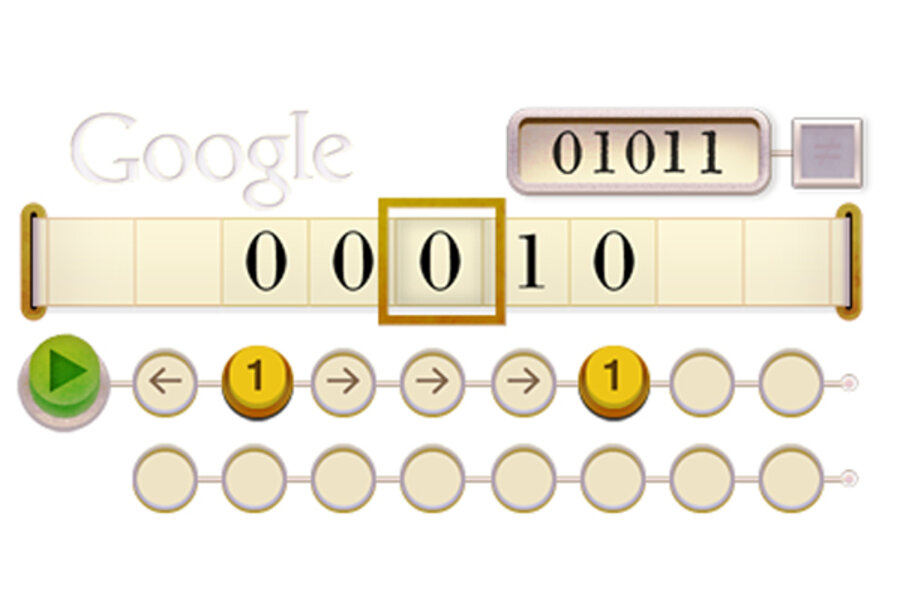Google swapped out its normal logo on Saturday in honor of Alan Turing. It's silly to say that one man won World War II, but if you had to pick just one guy, it would probably be Turing. His team of code breakers cracked the Germany military's secret cipher, allowing the Allies to intercept and read enemy messages. Without such a breakthrough, the war most likely would have ground on for several years longer than it did. After Germany surrendered, Turing went on to become the father of computer science and artificial intelligence.
So, for Turing's 100th birthday, Google created a simple computer – one with a secret code of its own.
The simulated computer is a counting machine. The number goes up by one each time. But it doesn't count 1, 2, 3, 4. Instead, it goes 1, 10, 11, 100. That's because it's counting in binary, the language of computers.
Humans have 10 fingers, so it makes sense for us to count up to 10 and then start recycling numbers. After 1 through 9, we have 10 through 19, then 20 through 29, and so on. But once you hit 99, you've run out of new two-digit numbers, so you jump to 100, a three-digit number.
Binary works the same way, with one big exception: it only uses zeros and ones. There are no twos, threes, or nines. Just zeroes and ones.
So in binary, you start counting with 0, then 1. You've run out of new single digits, so you hop to 10, then 11. Now you're out of two-digit numbers, so you leap to 100, 101, 110, 111. Think for a moment. What comes next? (Psst, it's 1000.)
Back to Google's puzzle. If you click on the green arrow below Google's name, the faux machine will present you with a little puzzle.
Can you make the large number in the center match the number in the top-right corner? In order to pull this off, Google created a super basic programming language, represented by the symbol along the bottom. Each symbol commands the machine. Arrows move the ticker tape in one direction or the other. Numbers tell the machine to swap in that value, so a "0" command would replace a whatever number is already there with a 0. The rules get more complex after that, but we'll deal with those later. For now, just worry about the yellow commands, those are the only ones that you can change.
One more thing: You can't hit the symbols like you would keys on a keyboard. Instead, you enter a full line of commands and then hit execute.
The first puzzle asks you to turn 00010 into 01011. Read on if you want the answer, or flip to the next few pages for solutions to the later problems.
How to solve Turing puzzle #1:
Turn both of the 0s into 1s, then hit the green button. The machine will start rolling and convert 00010 into 01011.
One down!







